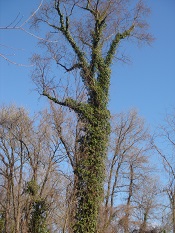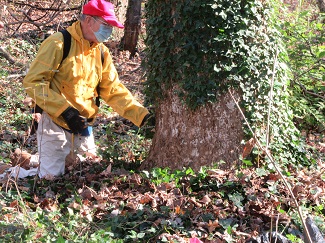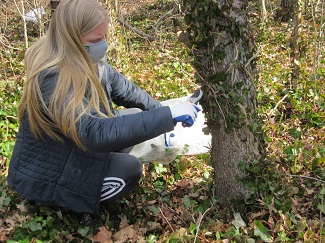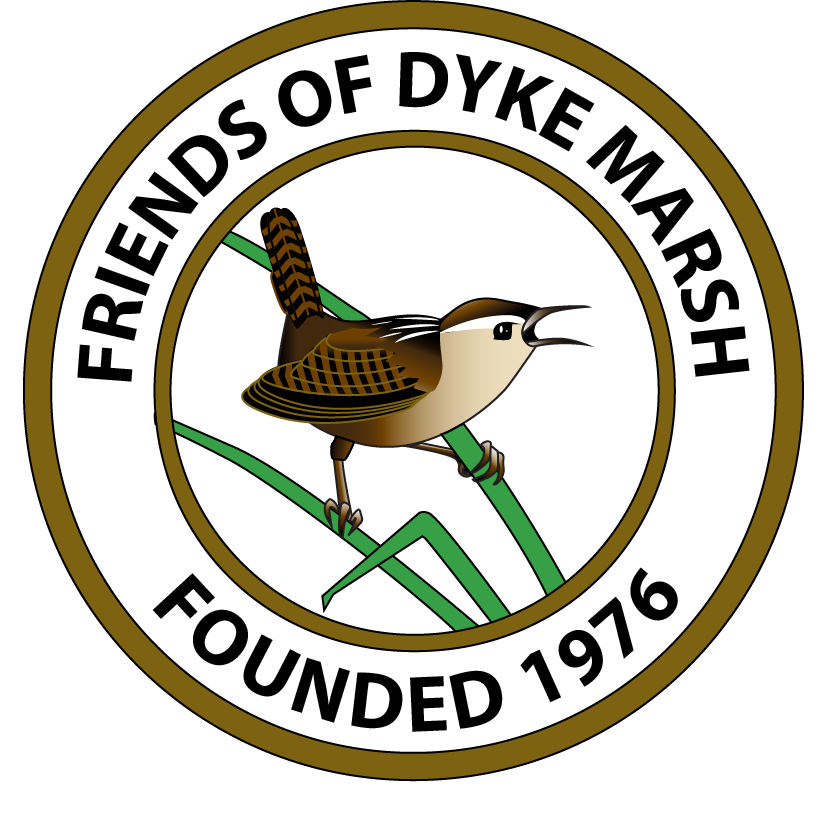In 2021 in five sessions, as of April 4, 2021, FODM volunteers have collected 136 bags of English ivy off trees, an effort to save the trees.
English ivy (Hedera helix L.) is an invasive, evergreen, aggressive invader that can outcompete and smother native plants, block sunlight needed by herbs and seedlings and spread into the forest canopy.
 English ivy can eventually kill trees.
English ivy can eventually kill trees.
“Vines climbing up tree trunks spread out and envelop branches and twigs, blocking sunlight from reaching the host tree’s foliage, thereby impeding photosynthesis,” says an NPS fact sheet. “An infested tree will exhibit decline for several to many years before it dies.”
Also, the added weight of vines can make the tree more vulnerable to blowing over during storms. It is also a reservoir for bacterial leaf scorch (Xylella fastidiosa), a harmful plant pathogen, says NPS.
Volunteers are cutting “windows” at the base of the trees between the volunteer’s ankle and knee and hauling the cut vines away for proper disposal. If cut soon enough, most ivy vines will die. To help, email
Thank you to our many dedicated volunteers who have helped.
Photos by Glenda Booth
 Kaye Titerence helped. Kaye Titerence helped. |
 Jim Gearing leads FODM's efforts. Jim Gearing leads FODM's efforts. |
 Anna Medema, a National Park Service intern, helps save a tree. Anna Medema, a National Park Service intern, helps save a tree. |


